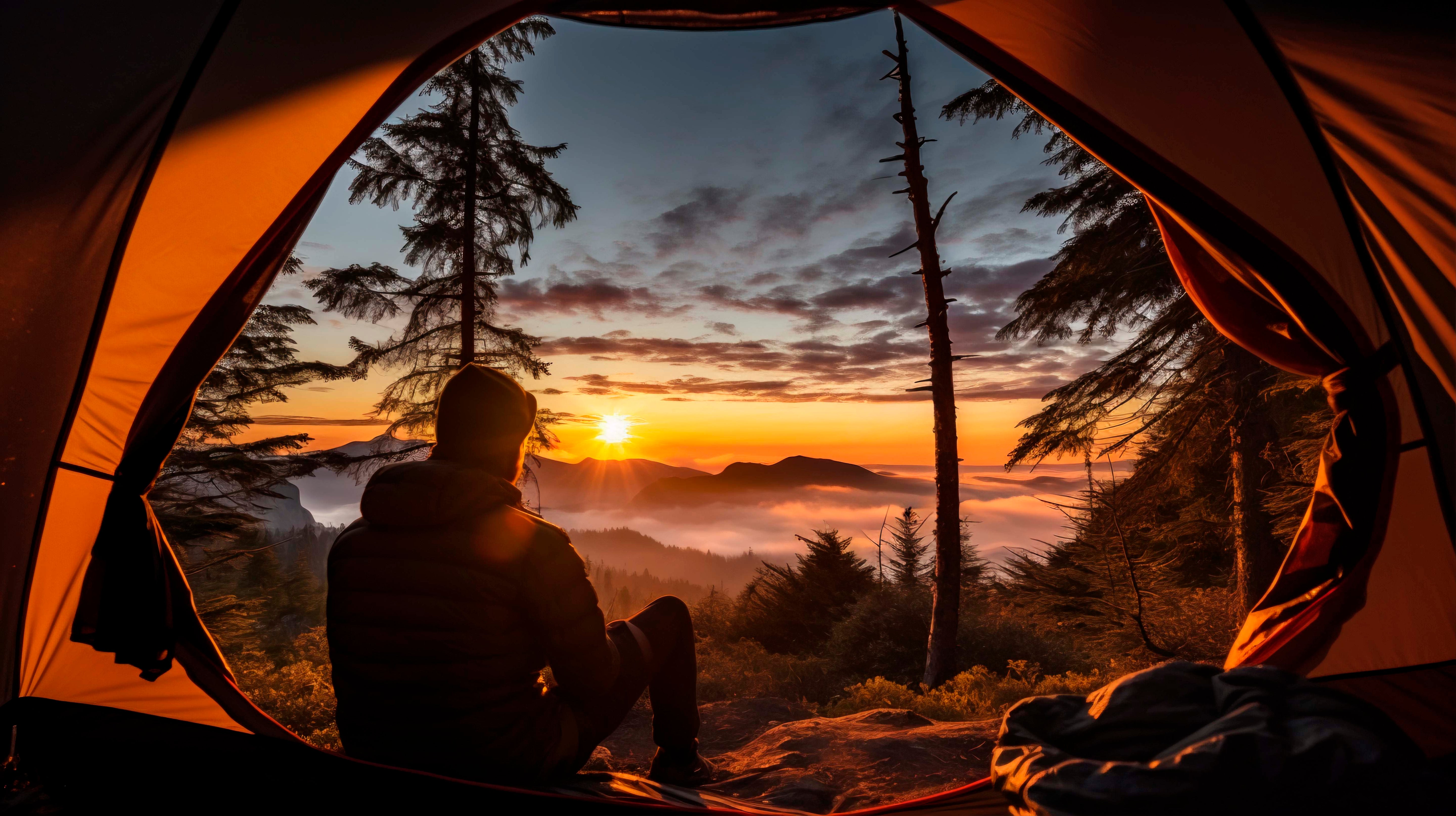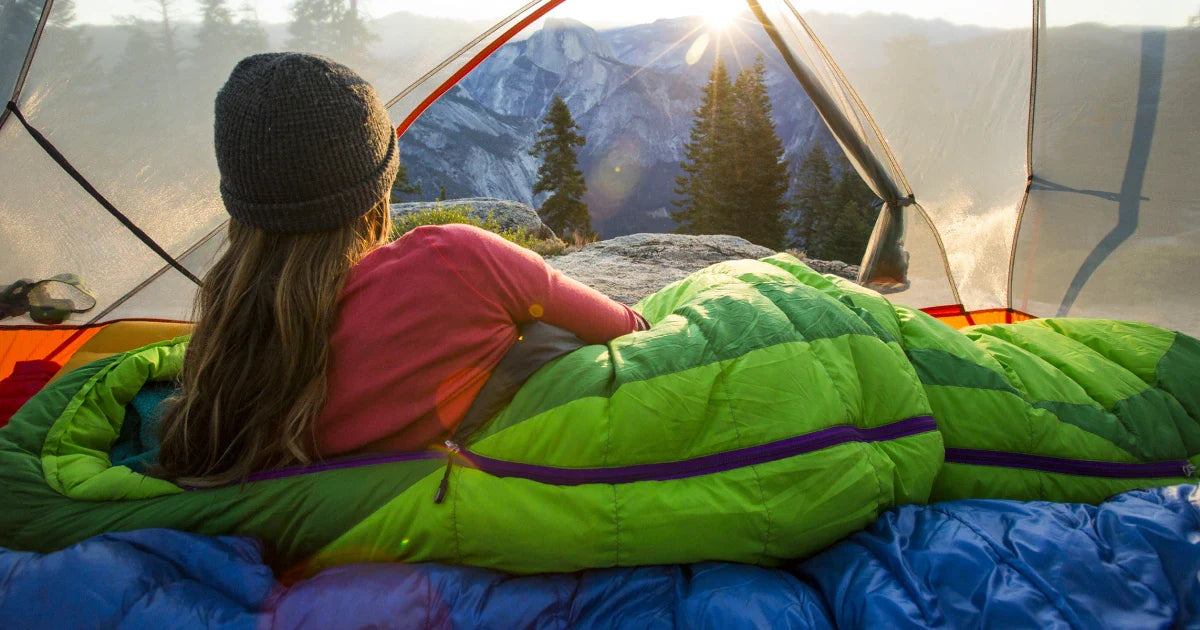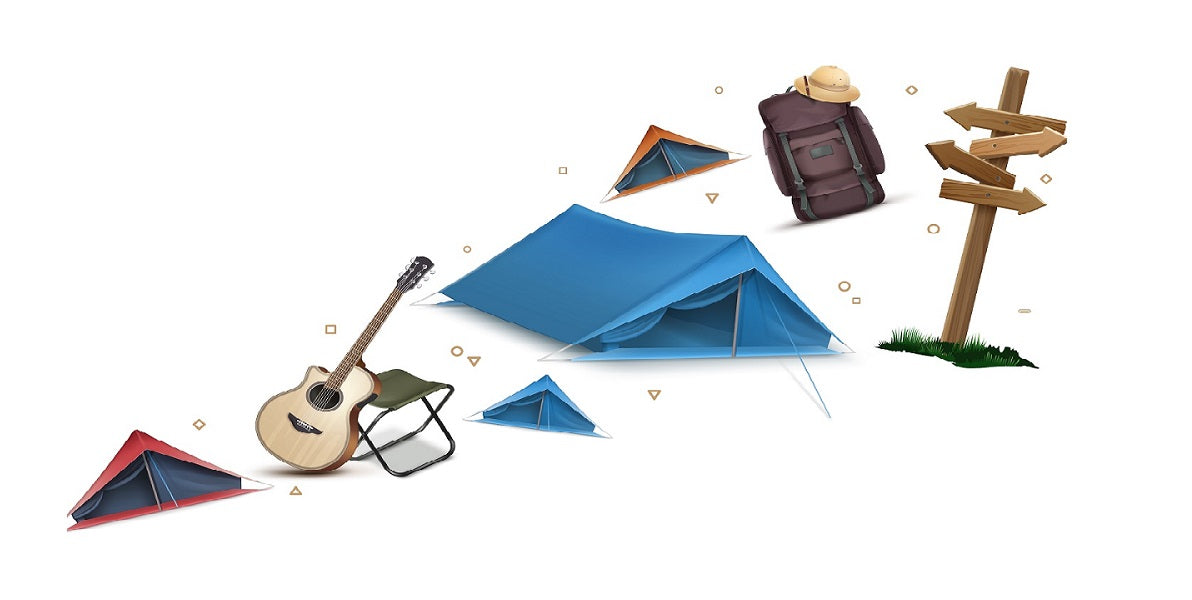
How Sleeping Bag Design Can Enhance Your Camping Comfort
Camping is an incredible way to connect with nature, but a comfortable night's sleep can make or break your experience. One of the most critical components for ensuring a good night’s rest in the wild is your sleeping bag. Understanding how sleeping bag design can enhance your camping comfort is essential for any camper, whether you're a novice or a seasoned outdoors enthusiast. This guide will delve into various aspects of sleeping bag design and how they contribute to overall comfort during your camping adventures.
Read Also: Conquer Any Climate: 4-Season Tents to Brave the Elements
Types of Sleeping Bags
Sleeping bags come in various designs tailored to different conditions and user preferences. The main types include:
- Rectangular Sleeping Bags
Design and Features:
- Shape: As the name suggests, these sleeping bags have a rectangular shape.
- Roominess: They offer ample space to move around, making them ideal for campers who don’t like feeling confined.
Comfort Advantages:
- Freedom of Movement: The extra space allows for more freedom of movement, similar to sleeping in your bed at home.
- Versatility: Many rectangular sleeping bags can be fully unzipped and used as a blanket.
Best For:
- Car Camping: Where weight and pack size are less of an issue.
- Warm Weather: Due to their less efficient heat retention.
- Mummy Sleeping Bags
Design and Features:
- Shape: Tapered design, wider at the shoulders and narrower at the feet.
- Hood: Comes with an integrated hood to provide additional warmth.
Comfort Advantages:
- Thermal Efficiency: The snug fit and hood design help retain body heat, making these bags ideal for cold weather.
- Lightweight and Compact: Easier to pack and carry, perfect for backpacking.
Best For:
- Cold Weather Camping: Excellent for retaining warmth.
- Backpacking: Lightweight and space-efficient.
- Semi-Rectangular (Modified Mummy) Sleeping Bags
Design and Features:
- Shape: A hybrid design that combines the features of rectangular and mummy bags.
- Hood: Often includes a hood for added warmth.
Comfort Advantages:
- Balance of Space and Warmth: Offers more room than mummy bags but retains better heat than rectangular bags.
- Versatility: Suitable for a range of temperatures and conditions.
Best For:
- Varied Conditions: A good choice for campers facing a mix of warm and cool weather.
- Versatile Use: Suitable for both car camping and backpacking.
Insulation Types
The type of insulation used in a sleeping bag plays a significant role in its comfort, warmth, and weight. The main insulation types are down and synthetic.
Read Also: Most Forgotten Camping Items

- Down Insulation
Features:
- Material: Made from the soft under feathers of ducks or geese.
- Warmth-to-Weight Ratio: Excellent, making it very warm and lightweight.
Comfort Advantages:
- Packability: Compresses well, making it easy to pack.
- Durability: Long-lasting with proper care.
- Breathability: Allows moisture to escape, keeping you dry and comfortable.
Considerations:
- Cost: Generally more expensive than synthetic options.
- Moisture Sensitivity: Loses insulating power when wet unless treated with a water-resistant coating.
- Synthetic Insulation
Features:
- Material: Made from polyester fibers.
- Water Resistance: Retains warmth even when wet.
Comfort Advantages:
- Affordability: Typically less expensive than down.
- Quick Drying: Dries faster than down if it gets wet.
- Hypoallergenic: Suitable for those with allergies to down.
Considerations:
- Bulkier: Heavier and less compressible than down.
- Durability: Tends to break down faster over time compared to down.
Temperature Ratings
Understanding temperature ratings is crucial for choosing a sleeping bag that keeps you comfortable in the conditions you'll encounter.
Comfort Rating vs. Limit Rating
- Comfort Rating: The temperature at which a cold sleeper might feel comfortable. This is the key number to consider for most users.
- Limit Rating: The temperature at which a warm sleeper might still feel comfortable. This is more relevant for experienced campers who can handle colder conditions.
Read Also: The 10 Most Important Things to Bring Outdoor Camping
Choosing the Right Temperature Rating:
- Seasonal Use: Select a bag rated 10-15 degrees lower than the lowest temperature you expect to encounter.
- Personal Comfort: Consider whether you sleep warm or cold and adjust accordingly.
Shape and Size Considerations
The shape and size of your sleeping bag can significantly affect your comfort.
- Length and Width
Length:
- Standard Length: Suitable for most people up to 6 feet tall.
- Long Length: Designed for taller individuals (over 6 feet).
Width:
- Standard Width: Suitable for average builds.
- Wide Width: Offers more room for larger individuals or those who prefer extra space.
Comfort Advantages:
- Proper Fit: Ensures maximum thermal efficiency and comfort.
- Freedom of Movement: Choose a width that allows for comfortable movement.
- Tapered vs. Non-Tapered Designs
Tapered (Mummy):
- Advantages: Better heat retention, lightweight.
- Considerations: Can feel restrictive for some users.
Non-Tapered (Rectangular):
- Advantages: More room and comfort.
- Considerations: Less efficient in retaining heat.
Read Also: 10 Must-Have Essentials for Your Outdoor Adventure
Additional Features for Enhanced Comfort
Modern sleeping bags come with a variety of features designed to enhance comfort and usability.
- Hoods and Draft Collars
Hoods:
- Design: Often adjustable with a drawcord.
- Comfort Advantages: Keeps your head warm and protected from cold air.
Draft Collars:
- Design: An insulated tube around the neck area.
- Comfort Advantages: Prevents warm air from escaping and cold air from entering.
- Zippers and Vents
Full-Length Zippers:
- Advantages: Allow for easy entry and exit, and can be unzipped for ventilation.
Two-Way Zippers:
- Advantages: Provide adjustable ventilation options, allowing you to manage temperature more effectively.
Anti-Snag Features:
- Design: Prevents fabric from getting caught in the zipper.
- Comfort Advantages: Ensures smooth operation and prevents damage.
- Sleeping Bag Liners
Material:
- Types: Available in silk, cotton, fleece, and synthetic materials.
- Comfort Advantages: Adds warmth, keeps the sleeping bag clean, and can be used alone in warmer conditions.
Benefits:
- Versatility: Extend the temperature range of your sleeping bag.
- Hygiene: Easier to clean than the sleeping bag itself.

Read Also: Trekking Essentials 2024: Must-Haves for Your First Hike
Choosing the Right Sleeping Pad
A sleeping bag alone isn’t enough for a comfortable night’s sleep; pairing it with the right sleeping pad is crucial.
Types of Sleeping Pads
- Closed-Cell Foam Pads
- Features: Lightweight, durable, and provides basic insulation.
- Comfort Advantages: Good for ultralight backpacking and rugged terrain.
- Self-Inflating Pads
- Features: Combine open-cell foam insulation with an air valve.
- Comfort Advantages: Offer a balance of comfort, insulation, and ease of use.
- Air Pads
- Features: Lightweight and compact, filled with air for cushioning.
- Comfort Advantages: Provide excellent comfort and pack down small, though they require inflation.
Choosing the Right R-Value
R-Value:
- Definition: A measure of thermal resistance; the higher the R-value, the better the insulation.
- Comfort Advantages: Select an R-value based on the expected ground temperature and season.
Recommendations:
- Summer Camping: R-value of 1-3.
- Three-Season Camping: R-value of 3-5.
- Winter Camping: R-value of 5 and above.
Personalizing Your Sleeping Bag Setup
Customizing your sleeping bag setup can further enhance comfort and cater to personal preferences.
- Pillows and Neck Support
Options:
- Camping Pillows: Specifically designed for outdoor use, often inflatable or compressible.
- Stuff Sack Pillows: Use your clothing or gear stuffed into a sack as a makeshift pillow.
Comfort Advantages:
- Neck Support: Helps maintain proper alignment and improves sleep quality.
- Sleeping Bag Accessories
Options:
- Compression Sacks: For reducing the size of your sleeping bag for easier packing.
- Stuff Sacks: Keeps your sleeping bag clean and organized when not in use.
- Storage Sacks: Larger sacks for storing your sleeping bag at home to maintain loft and prolong lifespan.
Comfort Advantages:
- Convenience: Makes packing and storage easier.
- Longevity: Helps maintain the integrity of your sleeping bag.
Maintenance and Care
Proper maintenance and care of your sleeping bag are essential for long-term comfort and performance.
Cleaning
Frequency:
- Spot Cleaning: Regularly spot clean to remove dirt and stains.
- Full Cleaning: Wash your sleeping bag as needed, typically once a season or after extended use.
Methods:
- Hand Washing: Gentle and effective, especially for down bags.
- Machine Washing: Use a front-loading machine on a gentle cycle with mild detergent.
Storage
Tips:
- Loose Storage: Store in a large, breathable sack to maintain loft.
- Avoid Compression: Avoid keeping your sleeping bag compressed for long periods, as this can reduce its insulating power.
Repairs
Common Issues:
- Tears and Rips: Use a repair kit to patch small holes or tears.
- Zipper Issues: Keep zippers clean and lubricated to ensure smooth operation.
Pro Tips:
- Regular Inspections: Check for any damage or wear after each trip.
- Professional Repairs: For significant damage, consider professional repair services.
Conclusion
A well-designed sleeping bag tailored to your specific needs and preferences can significantly enhance your camping comfort. From choosing the right type and insulation to understanding temperature ratings and additional features, every aspect plays a crucial role in ensuring a restful night under the stars. Pairing your sleeping bag with a suitable sleeping pad, personalizing your setup with accessories, and maintaining your gear properly will further enhance your camping experience. By investing time and effort into selecting and caring for the right sleeping bag, you can enjoy the great outdoors with the assurance of a good night's sleep, ready to embrace the adventures that await each day.
FAQ
- What is the best shape of sleeping bag for camping?
The best shape of a sleeping bag depends on personal preference and camping conditions. Mummy-shaped bags offer maximum warmth and thermal efficiency, while rectangular or semi-rectangular bags provide more room for movement and versatility.
- How do I choose the right temperature rating for my sleeping bag?
Consider the lowest temperatures you expect to encounter during your camping trips and choose a sleeping bag with a temperature rating that matches or exceeds those conditions. It's also essential to factor in personal comfort preferences and additional insulation layers if needed.
- Is down or synthetic insulation better for camping?
Both down and synthetic insulation have their advantages. Down insulation offers excellent warmth-to-weight ratio and compressibility but may lose insulating properties when wet. Synthetic insulation performs better in wet conditions and dries faster but tends to be bulkier and heavier.
- Can I use a sleeping bag designed for cold weather in warmer conditions?
Yes, you can use a cold-weather sleeping bag in warmer conditions, but it may be too warm and uncomfortable. Consider ventilating the bag by partially unzipping it or choosing a sleeping bag with adjustable features like a hood cinch or draft collar for better temperature regulation.
- How do I pack a sleeping bag for transport?
Most sleeping bags come with compression sacks or stuff sacks that allow you to compress them down to a compact size for transport. Start by loosely stuffing the sleeping bag into the sack, then cinch down the compression straps to reduce its volume further.
- Can I wash my sleeping bag?
Yes, you can wash your sleeping bag, but it's essential to follow the manufacturer's instructions carefully. Most sleeping bags can be hand-washed or machine-washed on a gentle cycle using a mild detergent. Avoid using fabric softeners or bleach, and always air-dry your sleeping bag thoroughly before storage.
- How do I store my sleeping bag when not in use?
To prolong the life of your sleeping bag, store it loosely in a breathable storage sack or hang it in a cool, dry place away from direct sunlight. Avoid storing your sleeping bag compressed for extended periods, as this can damage the insulation and affect its loft and warmth-retaining properties.
- Can I repair a damaged sleeping bag?
Yes, many minor tears, punctures, or zipper issues can be repaired using a patch kit or specialized repair tape. Follow the manufacturer's instructions or seek professional repairs for more significant damage or structural issues. Regular maintenance and timely repairs can extend the lifespan of your sleeping bag.
- What should I wear inside my sleeping bag?
Wear clean, dry sleepwear or base layers to maximize comfort and warmth inside your sleeping bag. Avoid wearing damp or sweaty clothing, as this can decrease insulation efficiency and lead to discomfort during the night.








